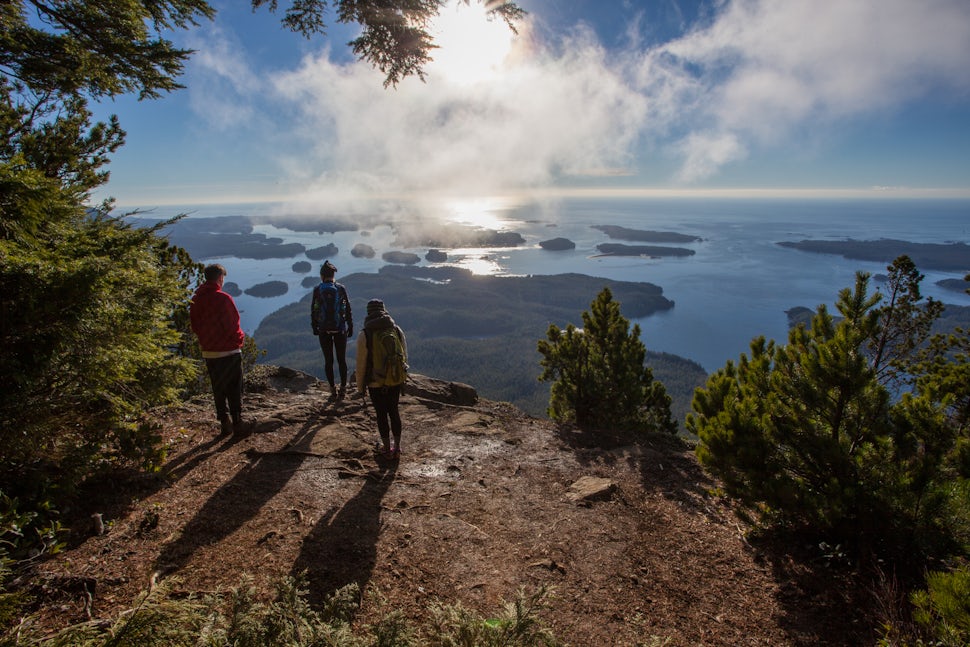7 Leave No Trace Principles To Respect The Wild
Take only pictures, leave nothing but footprints

More and more people are stepping off the grid and into the wild to experience the beauty of the backcountry and to enjoy what mother nature has to offer. Connecting with the wilderness makes us better humans and I hope to see the 'outdoor' movement continue to grow. With increased numbers, however, comes the potential for increased impact on the beautiful wild spaces we seek to enjoy in their natural state. Those of us who travel into the wilderness share the responsibility of helping to preserve it. Knowing, following and sharing 'Leave No Trace' etiquette is the best way we can show our respect for the wild spaces that bring us so much joy. Here are 7 Leave No Trace principles to practice on your next adventure.
1. Plan Ahead and Prepare
- Know the regulations and special concerns for the area you'll visit.
- Prepare for extreme weather, hazards, and emergencies.
- Schedule your trip to avoid times of high use.
- Visit in small groups. Split larger parties into groups of 4-6.
- Repackage food to minimize waste.
- Use a map and compass to eliminate the use of marking paint, rock cairns, or flagging.
2. Travel and Camp on Durable Surfaces
- Durable surfaces include established trails and campsites, rock, gravel, dry grasses or snow.
Protect riparian areas by camping at least 70 meters from lakes and streams. Good campsites are found, not made. Altering a site is not necessary.
In popular areas:
- Concentrate use on existing trails and campsites.
- Walk single file in the middle of the trail, even when wet or muddy.
Keep campsites small. Focus activity in areas where vegetation is absent.
In pristine areas:
- Disperse use to prevent the creation of campsites and trails.
- Avoid places where impacts are just beginning.

3. Dispose of Waste Properly
- Pack it in, pack it out. Inspect your campsite and rest areas for trash or spilled foods. Pack out all trash, leftover food, and litter.
- Deposit solid human waste in catholes dug 15 to 20 centimeters deep at least 70 meters from water, camp, and trails. Cover and disguise the cathole when finished.
- Pack out toilet paper and hygiene products.
- To wash yourself or your dishes, carry water 70 meters away from streams or lakes and use small amounts of biodegradable soap. Scatter strained dishwater.
4. Leave What You Find
- Preserve the past: examine, but do not touch, cultural or historic structures and artifacts.
- Leave rocks, plants and other natural objects as you find them.
- Avoid introducing or transporting non-native species.
- Do not build structures, furniture, or dig trenches.
5. Minimize Campfire Impacts
- Where fires are permitted, use established fire rings, fire pans, or mound fires.
- Keep fires small. Only use sticks from the ground that can be broken by hand.
- Burn all wood and coals to ash, put out campfires completely, then scatter cool ashes.
- Campfires can cause lasting impacts to the backcountry. Use a lightweight stove for cooking and enjoy a candle lantern for light.

6. Respect Wildlife
- Observe wildlife from a distance. Do not follow or approach them.
- Never feed animals. Feeding wildlife damages their health, alters natural behaviors, and exposes them to predators and other dangers.
- Protect wildlife and your food by storing rations and trash securely.
- Control pets at all times, or leave them at home.
- Avoid wildlife during sensitive times: mating, nesting, raising young, or winter.
7. Be Considerate of Other Visitors
- Respect other visitors and protect the quality of their experience.
- Be courteous. Yield to other users on the trail.
- Step to the downhill side of the trail when encountering pack stock.
- Take breaks and camp away from trails and other visitors.
- Let nature's sounds prevail. Avoid loud voices and noises

Find additional details on the Leave No Trace website.
Sarah Seads is a passionate hiker, biker, and trail runner who loves to play in the woods and climb to the top of things. She is also a kinesiologist, coach, and owner of Equilibrium Lifestyle Management (ELM), a group fitness and personal training company in the Comox Valley. Contact ELM for trail maps and information about trail running adventures on Vancouver Island.
Cover Photo: Matthew Hosford
We want to acknowledge and thank the past, present, and future generations of all Native Nations and Indigenous Peoples whose ancestral lands we travel, explore, and play on. Always practice Leave No Trace ethics on your adventures and follow local regulations. Please explore responsibly!
Do you love the outdoors?
Yep, us too. That's why we send you the best local adventures, stories, and expert advice, right to your inbox.








